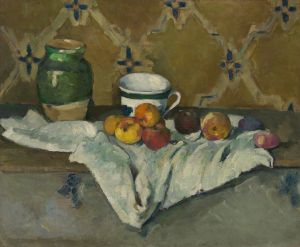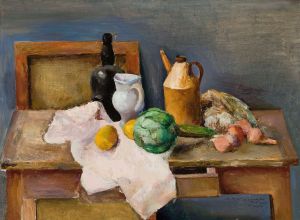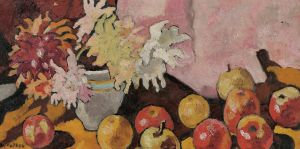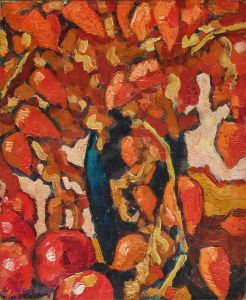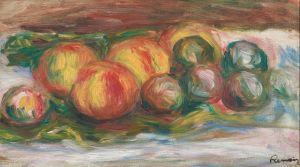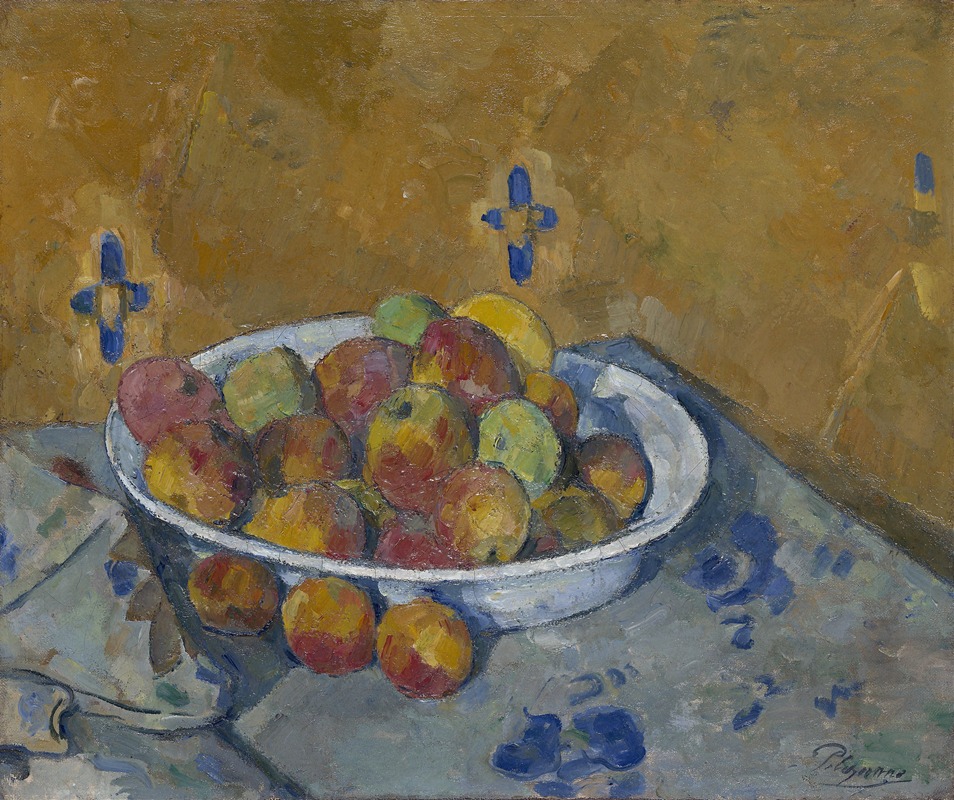
The Plate of Apples
A hand-painted replica of Paul Cézanne’s masterpiece The Plate of Apples, meticulously crafted by professional artists to capture the true essence of the original. Each piece is created with museum-quality canvas and rare mineral pigments, carefully painted by experienced artists with delicate brushstrokes and rich, layered colors to perfectly recreate the texture of the original artwork. Unlike machine-printed reproductions, this hand-painted version brings the painting to life, infused with the artist’s emotions and skill in every stroke. Whether for personal collection or home decoration, it instantly elevates the artistic atmosphere of any space.
Paul Cézanne's The Plate of Apples is a celebrated still-life painting that exemplifies the artist's innovative approach to composition, form, and color. Created in the late 19th century, this work is often associated with Cézanne's mature period, during which he sought to break away from traditional artistic conventions and explore new ways of representing objects in space. The painting is widely regarded as a pivotal example of Cézanne's influence on the transition from 19th-century Impressionism to 20th-century modernism.
The artwork depicts a simple arrangement of everyday objects: a plate of apples, a bottle, and a folded tablecloth. Cézanne's treatment of these elements reflects his interest in capturing the essence of forms rather than their exact likeness. The apples are rendered with bold, layered brushstrokes, creating a sense of volume and texture. The tablecloth, with its intricate folds and patterns, adds a dynamic quality to the composition, while the bottle provides a vertical counterpoint to the horizontal arrangement of the plate.
One of the most striking aspects of The Plate of Apples is Cézanne's deliberate manipulation of perspective. The objects in the painting do not adhere to a single, unified viewpoint. Instead, Cézanne employs multiple perspectives, subtly shifting angles and proportions to create a sense of instability and movement. This approach challenges the traditional rules of linear perspective and reflects Cézanne's belief that art should convey the experience of seeing rather than merely replicating reality.
The color palette of the painting is another hallmark of Cézanne's style. He uses a harmonious combination of warm and cool tones, with the vibrant reds and yellows of the apples contrasting against the muted blues and grays of the background. This interplay of colors enhances the visual impact of the composition and underscores Cézanne's mastery of color theory.
The Plate of Apples is housed in the collection of the Art Institute of Chicago, where it continues to be admired for its groundbreaking approach to still-life painting. The work is often studied as an example of Cézanne's role in shaping the development of modern art, particularly his influence on artists such as Pablo Picasso and Georges Braque, who drew inspiration from his exploration of form and perspective.
Through its innovative techniques and timeless subject matter, The Plate of Apples remains a testament to Paul Cézanne's enduring legacy as one of the most important figures in the history of Western art.










